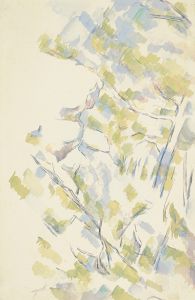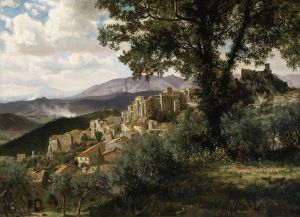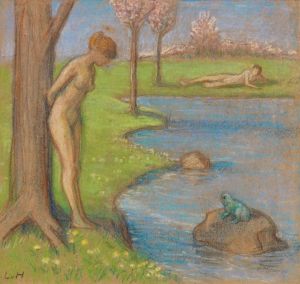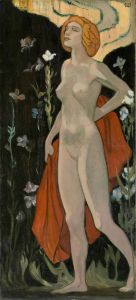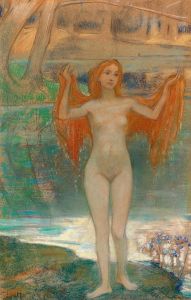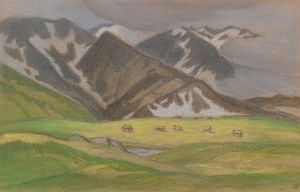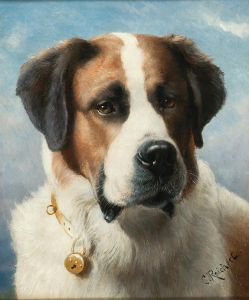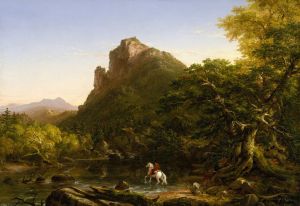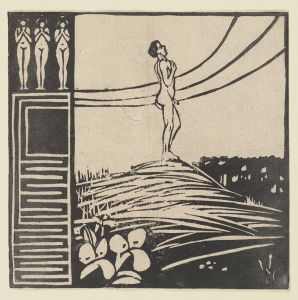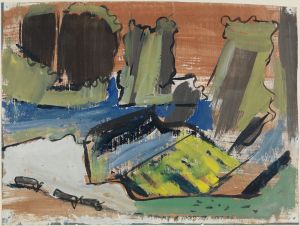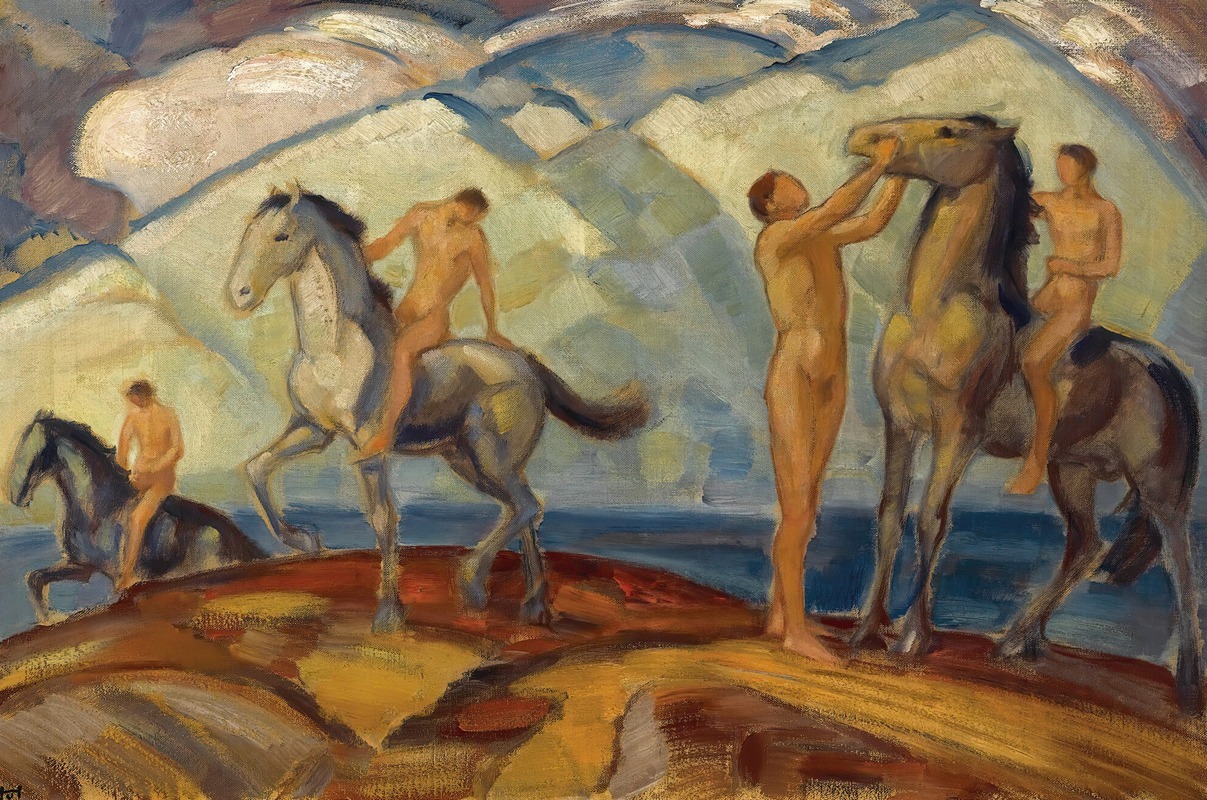
Reiter am Bergsee
A hand-painted replica of Ludwig von Hofmann’s masterpiece Reiter am Bergsee, meticulously crafted by professional artists to capture the true essence of the original. Each piece is created with museum-quality canvas and rare mineral pigments, carefully painted by experienced artists with delicate brushstrokes and rich, layered colors to perfectly recreate the texture of the original artwork. Unlike machine-printed reproductions, this hand-painted version brings the painting to life, infused with the artist’s emotions and skill in every stroke. Whether for personal collection or home decoration, it instantly elevates the artistic atmosphere of any space.
Ludwig von Hofmann (1861–1945) was a prominent German painter and graphic artist associated with the Jugendstil movement, which is the German counterpart of Art Nouveau. His works are known for their idyllic and often mythological themes, characterized by a harmonious blend of figures and landscapes. One of his notable works is "Reiter am Bergsee" (Rider by the Mountain Lake), which exemplifies his artistic style and thematic preferences.
"Reiter am Bergsee" captures a serene and dreamlike scene, typical of Hofmann's oeuvre. The painting depicts a lone rider on horseback by a tranquil mountain lake, surrounded by a lush and verdant landscape. The composition reflects Hofmann's fascination with nature and the human figure, integrating them into a cohesive and harmonious whole. The rider, often interpreted as a symbol of freedom and exploration, is set against a backdrop of towering mountains and a placid lake, evoking a sense of peace and introspection.
Hofmann's use of color in "Reiter am Bergsee" is notable for its subtlety and depth. The palette is dominated by earthy tones and soft greens, which enhance the natural setting and contribute to the painting's calming effect. The careful modulation of light and shadow adds a three-dimensional quality to the scene, drawing the viewer into the tranquil world Hofmann has created. This attention to detail and atmosphere is a hallmark of Hofmann's work, reflecting his background in both painting and graphic arts.
The painting also demonstrates Hofmann's skill in capturing movement and stillness simultaneously. The rider, though stationary, seems poised for motion, suggesting a narrative beyond the immediate scene. This dynamic tension between movement and rest is a recurring theme in Hofmann's work, inviting viewers to contemplate the relationship between humanity and nature.
"Reiter am Bergsee" is representative of the broader cultural and artistic trends of its time. The Jugendstil movement, with which Hofmann is associated, sought to break away from traditional academic art forms and embrace a more organic and holistic approach to art. This movement emphasized the unity of art and life, a concept that is vividly illustrated in Hofmann's integration of human figures into natural landscapes.
Ludwig von Hofmann's work, including "Reiter am Bergsee," has been influential in the development of modern art in Germany. His paintings are celebrated for their aesthetic beauty and philosophical depth, offering a vision of harmony between humans and the natural world. Hofmann's legacy continues to be appreciated by art historians and enthusiasts, who value his contribution to the evolution of modern art and his unique ability to capture the essence of the Jugendstil movement.
In summary, "Reiter am Bergsee" is a quintessential example of Ludwig von Hofmann's artistic vision, blending natural beauty with human presence in a way that is both visually captivating and intellectually stimulating. The painting remains a testament to Hofmann's skill and his enduring influence on the art world.





